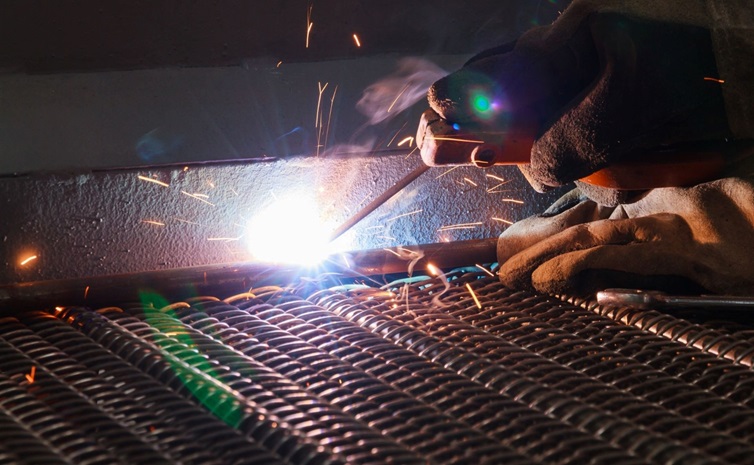Maintenance Of a Welding Fume Extraction System

Do you have a welding fume extraction system in your workplace? If so, how often do you maintain it to make sure it is working properly and that the air quality is safe for workers? Proper maintenance of these systems can be time consuming but necessary. This article will provide some tips how to maintain a welding fume extraction system.
What is a fume extractor?
A fume extractor is part of a welding or thermal cutting system that “extracts”, or removes, air polluted with gaseous and particulate pollutants created by the welding process. This occurs through the use of a hood that encloses the weld area but has an opening at the back of the working space. An externally mounted fan then draws contaminated air from behind and around the welder and pumps it through a filter that removes the contaminants. The clean air is then exhausted outside of the building
How does it work?
A fume extractor is a ventilating device used in welding and other metal-working processes that produce toxic fumes. The fumes are drawn from the work or operator area by means of either forced or natural conveying action; they may be filtered before discharge into the atmosphere, or they may be discharged into the atmosphere without filtration.
In the case of filtration, a variety of filters may be employed to remove particulates of various size from the exhaust fumes; inertial screens and activated carbon are common media for removing toxic compounds. Even though a filter has been used, it is likely that corrosive or acidic vapors will need to be neutralized before being released to the atmosphere. Some types of fume extraction systems include a mechanism for directing wash water in front of and behind the nozzle to increase the number of particulates that are removed. This wash water is then collected and drained away from the exhaust air stream by using internal piping or plumbing
Maintenance of a welding fume extraction system – General
- The system shall be free of all obstructions that would adversely affect the operation or efficiency of the unit.
Steer clear of clutter, dust and dangerous worksites when performing maintenance tasks. Ensure that tools (such as wrenches) are accessible for operating service valves, switches, etc.
- The fan wheel shall be cleaned on a regular basis and when the unit has been in use for extended periods of time.
When the filters are saturated and the pressure switch is functioning properly, you may not be able to tell (by looking or listening) if your fan wheel needs cleaning. You can test for this by using an air flow tester or a smoke candle to see if airflow is blocked or reduced. A clean fan wheel is essential for proper system performance.
- The filters shall be kept free of contaminants, to prevent the build-up of particulate matter on the filter surface. This will reduce dirt pick up and extend the life of the filters; it may also improve filtration efficiency. Filters are to be cleaned, when necessary, usually at the frequency of every 50-100 hours.
Use a vacuum cleaner or compressed air to remove loose matter from each filter element. The use of an aspirator or water wash may reduce the amount of dust and dirt that is dislodged during cleaning. Take care not to damage any connecting tubes when using these cleaning methods. Ensure that the filter area is dry after cleaning and before operation of the unit, as wet filters will impede airflow through the system. When using compressed air to clean a filter element, make sure that no water or dirt is carried into other parts of the fume extractor such as motor housings or control panels. To check for moisture, place a piece of adhesive tape on the filter element and leave it for a few minutes. The tape should then be removed and dried; if water spots appear, then drying is required.
- Any external hoses shall be checked regularly (at least once per shift) to ensure that they are in good condition and free from leaks. Dirt and water may cause the demand fan to work harder than normal, which will reduce the life of your motor(s). Fume hood maintenance should be regular.
- The nozzle shall be checked regularly for obstructions (in the inlet) or damage such as cracks, holes or worn-out seals that will prevent a good airtight seal with the hood. It is also important to regularly check the nozzle for any signs of damage, so that you will be aware of them before they become a problem.
- The pressure switch shall be checked on a regular basis to ensure that it is functioning properly and not removed from the air stream or damaged in some way. If a problem with the switch occurs, there is a potential for fumes to leak into the work area.
After any welding services montana, the unit should be thoroughly checked and tested before being put back into service (at least a one-hour check). This time may be reduced if there is no other reason to suspect that the fume extraction unit has been damaged as a result of the maintenance task.
Hope this article could answer What Is Fume Extraction System & How Does It Work and its maintenance.

